
Guide
The Voice of God courtesy of Auro 3D
by Martin Jud
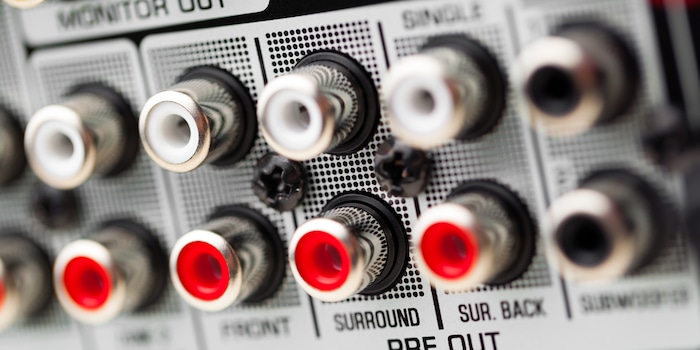
Did you know that THX is not a surround format? Do you often wonder what is behind a certain surround designation? And what are audio objects, how does virtual surround work and what is a codec? These are all questions that you will soon no longer have to ask yourself.
If you want a quick overview of surround technologies and their characteristics, you will find tables below with all the information at a glance. I have compiled data on both Dolby and DTS formats. Otherwise, I look forward to taking you on a chronological technology journey, where, after a brief introduction about hearing, we start in the Renaissance.
When you are surrounded in English or surrounded by something, you are "surrounded" by something. With surround sound, you are surrounded by sound. Surround sound is therefore the term for sound recordings that technically create a spatial sound impression.
The human ear is quite sophisticated. It analyses the time and level differences between the two ears to determine the lateral direction of sound. Whether the sound comes from the front, back, top or bottom is determined by resonances in the pinna and the external auditory canal. The distance of a sound source is based on empirical values. Reflection patterns and sound colours from our memory are used and evaluated.
Of course, this explanation only scratches the surface and does not really reflect the complexity and depth that this topic entails. But we don't need to go any deeper. The important thing to understand is that it all starts with human biology and that all surround technology is based on findings from biology and physics.
All right, I'll correct myself: It all started with a dream. An idea that inspires so much that someone dares to turn the dream into reality. And that's exactly what happened in Venice between 1500 and 1600 with the idea of surround sound.
The first surround sound already existed in the late Renaissance. In Italy, the so-called Venetian polychoral style emerged in the mid-16th century. The architecture of the church and its space, with all its niches and galleries, was incorporated into the composition and the human being literally became the centre of the art. The choirs and instruments were placed around the audience. The music thus reached a new dimension, which is why Venetian polychoral music was and still is popular far beyond Italy.
It was a long time before people were able to experience this new dimension of listening in their own homes. Over 400 years later, Dolby Stereo was introduced in 1975. This was the precursor to the first surround technology for the home. For the first time, cinemas were able to provide a centre speaker and a surround sound channel (centre rear) in addition to the stereo channels. The technology was then adopted for home cinema and launched on the market in 1982 in the form of Dolby Surround.
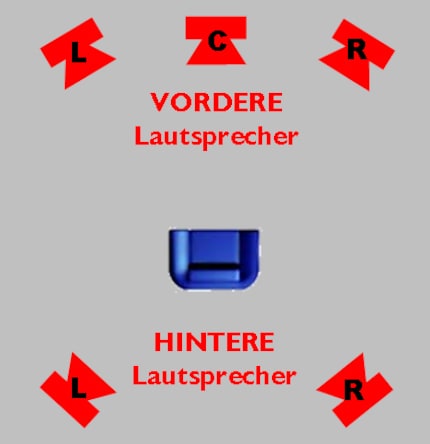
The special thing about the first surround formats of our time is that the additional sound tracks (centre and centre rear) are integrated into an analogue stereo signal (matrix coding). The analogue signal of this technology is also downward compatible. This means that you can also play a sound carrier with Dolby Surround or a Dolby Surround Pro Logic version in stereo. The information of the additional tracks is integrated intelligently enough into the existing two tracks so that they do not spoil the sound of pure stereo.
The matrix coding uses various techniques that only a physicist and a biologist (or a psychologist at best) can fully understand. For example, the centre rear channel is encoded using a phase shift of 180 degrees. In addition, certain frequency ranges are restricted to counteract acoustic distortion. The decoder (amplifier) assigns the signals to the correct channel using an adaptive matrix.
This technology is unfortunately not lossless, as channel separation is only simulated in principle.
A codec is an algorithm that digitally encodes or decodes data or signals. For example, it converts a CD in RAW audio format PCM into MP3 files. Or decodes the MP3 files for playback.
There are lossless (e.g. DTS-HD Master Audio, Dolby TrueHD) and lossy codecs. Lossy means that the codec also performs dynamic range reduction and data compression when encoding the analogue signals. This results in a loss of quality, which is perceived more or less well depending on the compression method and bit rate.
The first surround formats with lossy codecs were Dolby Digital (1992, Dolby Laboratories Inc.), DTS (1993, DTS Inc.) and the Sony Corporation's SDDS format (1993), which was only developed for the cinema. Dolby Digital and DTS are still widely used today. In contrast to matrix-coded analogue sound formats, these technologies store all channels individually. For people with normal hearing, the difference to lossless audio formats is difficult to discern. However, it also depends on the equipment used. In particular, the quality of the speakers. And this is where THX comes into play.
THX is a collection of different standards for sound and image. It is a commercial seal of quality. THX certifications are intended to ensure a uniform quality standard. They are intended to ensure that you receive the sound the way the sound engineer wants it. Or that you see the picture the way the director imagines it.
The company THX Ltd. was founded in 1983 by George Lucas and is now owned by the computer accessories manufacturer Razer. THX certifications are rarely found in the cinema sector, as the licence costs are said to be very expensive. Until 1999, there was only one THX certification. In addition to THX Ultra certifications for large rooms, there are now also THX Select certifications for medium-sized and small rooms (home use). The certifications are not intended to differ in terms of sound, but in terms of performance. In addition to speakers, subwoofers and receivers, other devices such as sound cards are also certified (THX Certified Multimedia).
Attention: If a device does not have any certification, this does not mean that it cannot have the picture or sound quality of a certified device. However, it can be assumed that a certified device offers a certain standard.
In addition to content and a playback device, you need an amplifier that supports the corresponding surround formats and processes and plays them according to your speaker configuration. A classic 5.1 configuration has two front speakers (front right and left), a centre speaker in between, two surround speakers (side right and left at viewer/listener level) and a subwoofer (LFE channel) for low frequencies up to 100 Hz. Incidentally, the body cannot really localise low bass frequencies. Nevertheless, we have the feeling that the tingling in our stomach comes from a certain direction. Together with the visual information from what we see, the brain categorises the source of the bass.
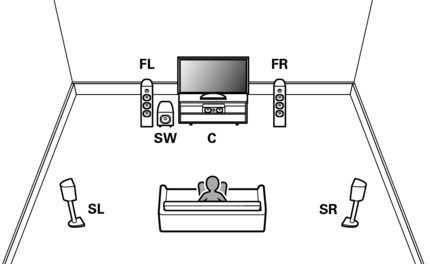
Whether you have a 5.1 system or one with more speakers, it is important that the speakers are placed as symmetrically as possible around the listener. Ideally in a circle. However, it is anything but easy to set up a surround system in such a way that the sound sounds authentic to the recording. The walls and other objects in the room can cause some of the sound to be absorbed or reflected back. This influences the sound image.
However, there are also technologies that utilise the fact that sound is reflected back. The relatively new Dolby Atmos and DTS:X formats also support height speakers, which make it possible, for example, for the sound of the aircraft in the film to actually come from above. This can be achieved either with speakers mounted in the appropriate positions or by means of so-called up-firing speakers. These are compact add-on modules for floor-standing speakers that bring the sound to the listener via ceiling reflection.
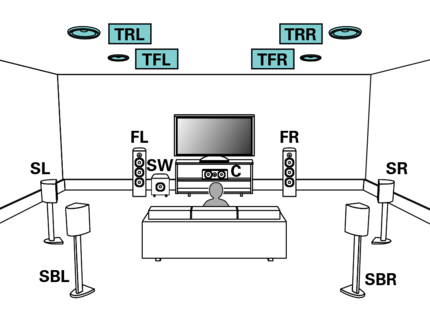
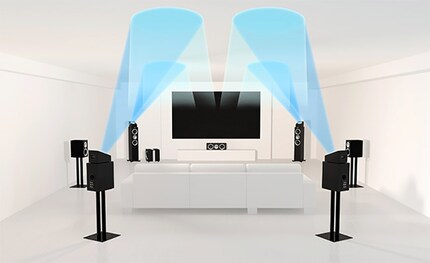
In contrast to the add-on modules, audio objects are not physical objects. That would be too nice ... or dangerous. Clear your throat ... In any case, we are talking about virtually placed objects whose sound we are ultimately supposed to hear. Object-based surround can be found in the technologies Dolby Atmos (2012) and the rival product DTS:X (2015).
In contrast to channel-orientated surround sound, object-orientated surround sound is not stored on a channel basis. Here, objects are sent through the room. The coordinates and the sound of the objects are assigned to the required channels by the amplifier or playback device. In order for the seagull to circle above you and for you to get wind of it, it must first be calculated which speakers of the current configuration must play which sound at what volume at what time. Everything clear? :)
Object-orientated surround sound has the great advantage that it is detached from a specific channel configuration. In theory, you can use it to supply an infinite number of channels. However, like channel-orientated sound, it is tied to a fixed listening position. If you are sitting at the far edge of the cinema, you will not hear the perfect mix even with object-oriented sound. This problem could be solved using object-orientated sound in conjunction with a sound system based on wave field synthesis.
Virtual Surround simulates surround sound with two loudspeakers or stereo headphones. However, this does not mean that quality has to be compromised. The first virtual surround was already available in 2001 thanks to Dolby Headphone and in 2002 thanks to Dolby Virtual Speaker. DTS offers the technologies DTS Surround Sensation (2008) and DTS Headphone:X (2015) for this purpose.
Virtual Surround is based on HRTF algorithms. HRTF stands for "Head Related Transfer Function" and describes the processes by which sound is influenced by our own hearing. Which brings us back to the time and level differences and resonances of the auricles and ear canal mentioned at the beginning of the article.
If there is a Stalin organ blasting away in a film and the right side of your headphones reproduces this sound louder than the left, your hearing will have the impression that shots are being fired from the right side. If you want this sound to give the impression that it is coming from a certain direction (top, bottom, front or back), the sound level will be increased compared to other frequency ranges.
If you would like to find out more about virtual surround, I recommend the following article by Philipp Rüegg: [[marketingpage:5875]]
These hand-collected lists in tabular form contain information on all surround formats from Dolby Laboratories Inc. and DTS Inc. up to 2015. They are organised according to the year the technology was introduced. You will find a list for Dolby and one for DTS.
| Surround technology (launch year) | Area of application | Codec or applied technology | Number of channels | Arrangement of the channels | Channel- or object-orientated |
|---|---|---|---|---|---|
| Dolby Stereo (1975) | Cinema | Analogue stereo signal with matrix coding (lossy) | 4 (from 2 audio tracks with matrix coding) | Left Front, Centre, Right Front, Centre Rear | Channel-orientated |
| Dolby Surround (1982) | Home cinema | Analogue stereo signal with matrix coding (lossy) | 4 (from 2 audio tracks with matrix coding) | Left Front, Centre, Right Front, Centre Rear | Channel-orientated |
| Dolby Surround Pro Logic (1987) | Home cinema | Analogue stereo signal with matrix coding (lossy) | 5 (from 2 audio tracks with matrix coding) | Left Front, Centre, Right Front, Left Rear, Right Rear | Channel-orientated |
| Dolby Digital (1992) | Cinema and home cinema | AC-3 (lossy) | 5.1 | Left Front, Centre, Right Front, Left Surround, Right Surround, LFE (subwoofer) | Channel-orientated |
| Dolby Digital EX (1999) | Cinema and home cinema | AC-3 (lossy) | 6.1 (upconverted from 5.1 audio tracks) | Left Front, Centre, Right Front, Left Surround, Right Surround, Centre Rear, LFE (subwoofer) | Channel-orientated |
| Dolby E (1999) | Video editing (television stations) | Dolby E (almost lossless) | to 7.1 | Different | Channel-orientated |
| Dolby Surround Pro Logic II (2000) | Home cinema | Analogue stereo signal with matrix coding (lossy) | 5.1 (from 2 audio tracks with matrix coding) | Left Front, Centre, Right Front, Left Surround, Right Surround, LFE (subwoofer) | Channel-orientated |
| Dolby Headphone (2001) | Headphones (Virtual Surround) | Dolby Headphone DSP | to 7.1 | Stereo headphones (Virtual Surround) | Channel-orientated |
| Dolby Virtual Speaker (2002) | Home cinema (virtual surround with stereo speakers) | Dolby Virtual Speaker DSP | 5.1 | Stereo speakers (Virtual Surround) | Channel-orientated |
| Dolby Surround Pro Logic IIx (2003) | Home cinema | Analogue stereo signal with matrix coding (lossy) | 6.1 or 7.1 (from 2 audio tracks with matrix coding) | Left Front, Centre, Right Front, Left Surround, Right Surround, Left Rear, Right Rear, LFE (subwoofer) | Channel-orientated |
| Dolby Digital Plus (2005) | Cinema and home cinema | E-AC-3 (lossy) | 7.1 | Left Front, Centre, Right Front, Left Surround, Right Surround, Left Rear, Right Rear, LFE (subwoofer) | Channel-orientated |
| Dolby Digital Live (2005) | PC (real-time encoding for multimedia applications and games) | AC-3 (lossy) | 5.1 | Left Front, Centre, Right Front, Left Surround, Right Surround, LFE (subwoofer) | Channel-orientated |
| Dolby TrueHD (2007) | Home cinema | Dolby TrueHD (lossless) | 5.1 or 7.1 channels. Up to 8 channels and 20 objects at 96 kHz sampling frequency. Up to 6 channels at 192 kHz sampling frequency. | Different | Channel- and/or object-orientated |
| Dolby Surround Pro Logic IIz (2009) | Home cinema | Analogue stereo signal with matrix coding (lossy) | 7.1.2 (from 2 audio tracks with matrix coding) | Left Front, Centre, Right Front, Left Front Height, Right Front Height, Left Surround, Right Surround, Left Rear, Right Rear, LFE (Subwoofer) | Channel-orientated |
| Dolby Atmos (2012) | Cinema and home cinema | Object-orientated surround sound: Dolby TrueHD (lossless) or Dolby Digital Plus (lossy) | Depending on the configuration used | Different (height speakers are also supported) | Object-orientated |
| Dolby AC-4 (2015) | Home cinema | AC-4 (lossy) | up to 7.1.4 (7 audio objects supported) | Different | Channel- and/or object-orientated |
| Surround technology (launch year) | Area of application | Codec or applied technology | Number of channels | Arrangement of the channels | Channel- or object-orientated |
|---|---|---|---|---|---|
| DTS (1993) | Cinema and home cinema | DTS (lossy) | 5.1 | Left Front, Centre, Right Front, Left Surround, Right Surround, LFE (subwoofer) | Channel-orientated |
| DTS 70 mm (1994) | Cinema | DTS Time Code on 70 mm film and DTS Playback Unit (CD-ROM) | 5.1 | Left Front, Centre, Right Front, Left Surround, Right Surround, LFE (subwoofer) | Channel-orientated |
| DTS Neo:6 (1999) | Home cinema | DTS Neo:6 DSP | up to 7.1 (upconverted from 2.1, 5.1, 6.1, or 7.1 audio tracks) | Different | Channel-orientated |
| DTS-ES (1999) | Home cinema | DTS-ES Matrix or DTS-ES Discrete 6.1 (lossy) | 6.1 (either upconverted as 5.1 audio tracks or directly from 6.1 source material) | Left Front, Centre, Right Front, Left Surround, Right Surround, Centre Rear, LFE (subwoofer) | Channel-orientated |
| DTS-96/24 (2001) | Home cinema | DTS 96/24 (lossless) | 5.1 | Left Front, Centre, Right Front, Left Surround, Right Surround, LFE (subwoofer) | Channel-orientated |
| DTS Connect (2004) | PC (real-time encoding for multimedia applications and games) | DTS (lossy) | 5.1 or 7.1 | Left Front, Centre, Right Front, Left Surround, Right Surround, LFE (subwoofer) | Channel-orientated |
| DTS-HD Master Audio (2004) | Cinema and home cinema | DTS-HD Master Audio (lossless) | up to 7.1 (9 audio objects supported) | Different | Channel- and/or object-orientated |
| DTS-HD High Resolution Audio (2004) | Cinema and home cinema | DTS-HD High Resolution Audio (lossy) | to 7.1 | Different | Channel-orientated |
| DTS Surround Sensation (2008) | PC headphones or speakers (virtual surround) | DTS Surround Sensation DSP | 5.1 (upconverted from 2 audio tracks) | Stereo headphones or speakers (virtual surround) | Channel-orientated |
| DTS Neo:X (2011) | Home cinema | DTS Neo:X DSP | 7.1.4 (from 2.1, 5.1, 6.1 or 7.1) or downmixing to 5.1 or 7.1 | Left Front, Centre, Right Front, Left Front Height, Right Front Height, Left Surround, Right Surround, Left Rear, Right Rear, Left Rear Height, Right Rear Height, LFE (Subwoofer) | Channel-orientated |
| DTS:X (2015) | Cinema and home cinema | Object-orientated surround sound: DTS-HD Master Audio (lossless) or DTS-HD High Resolution Audio (lossy) | Depending on the configuration used | Different (height speakers are also supported) | Object-orientated |
| DTS Neural:X (2015) | Upmixer for Dolby and DTS-encoded or PCM content | DTS-HD (lossy) | Depending on the configuration used | Different (height speakers are also supported) | Channel-orientated |
| DTS Headphone:X (2015) | Headphones (Virtual Surround) | DTS Headphone:X DSP | to 7.2.4 Channels | Stereo headphones (Virtual Surround) | Channel- and/or object-orientated |
I very much hope that my tables have not overwhelmed you and that all the information has given you some orientation in the surround jungle. You might even smile in future when you realise that your smartphone can handle Dolby Atmos. Much of the surround world is primarily important for Marketing. A car radio with a THX sticker is more likely to be bought than one without.
We don't know exactly what the future holds. As THX now belongs to Razer, I can well imagine that certified cinemas will soon come with LEDs on every seat, which will then accompany what you are watching with appropriate lighting effects in the spirit of Ambilight.
When it comes to surround technology, I hope that wave field synthesis will soon be suitable for mass production. With this technology, everyone in the room hears exactly the same thing regardless of where they are. Best quality for everyone.
Update from 17 August 2018
In addition to Dolby and DTS surround formats, more and more films also offer support for Auro 3D. If you would like to find out more about Auro 3D, you are welcome to take a look at the following article
.
I find my muse in everything. When I don’t, I draw inspiration from daydreaming. After all, if you dream, you don’t sleep through life.
Practical solutions for everyday problems with technology, household hacks and much more.
Show all